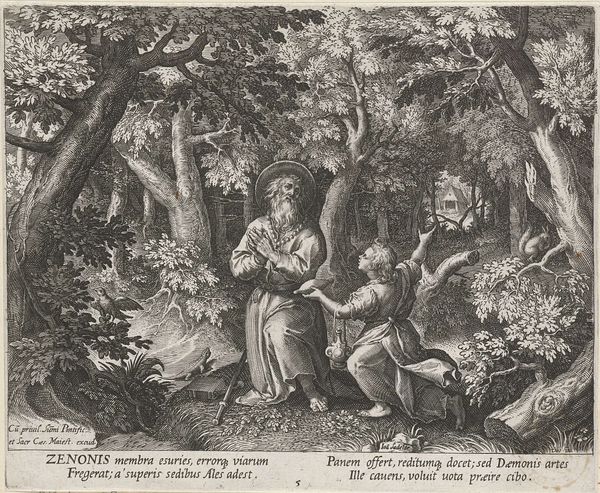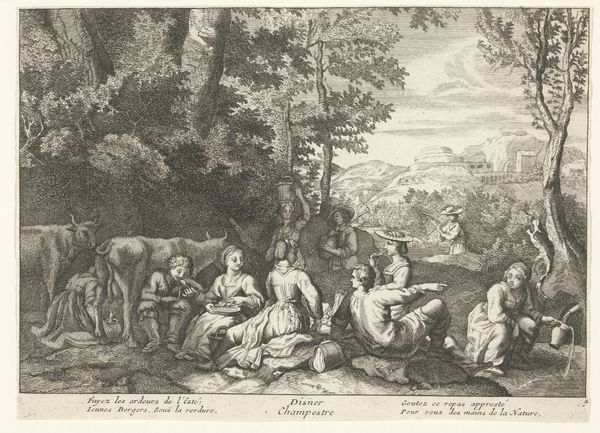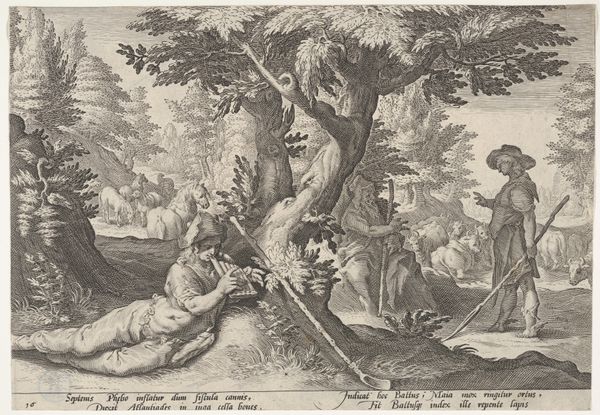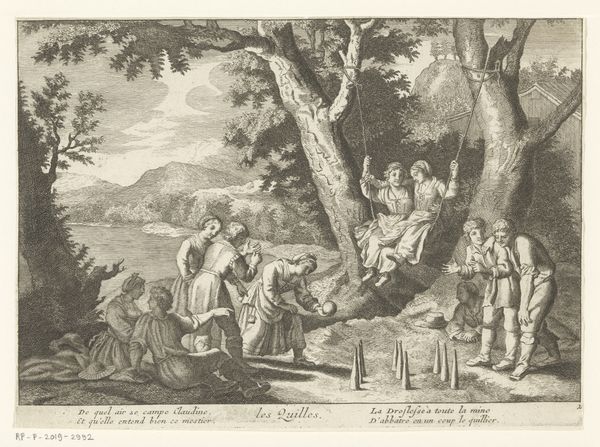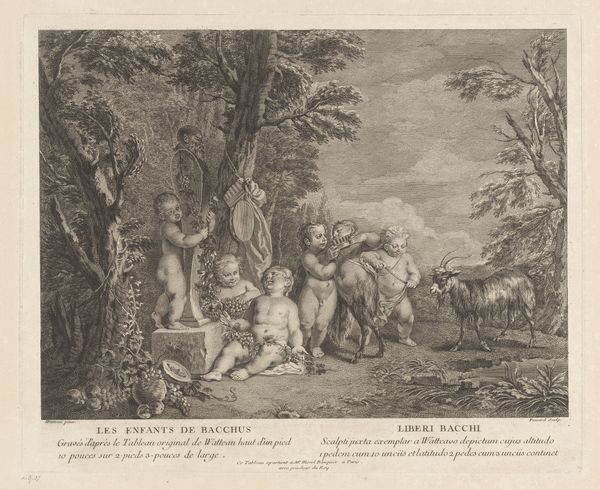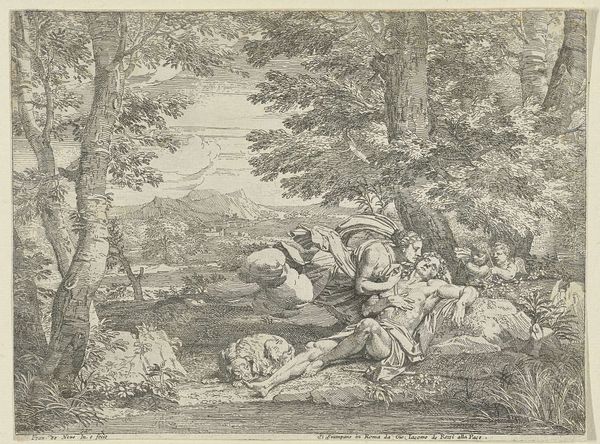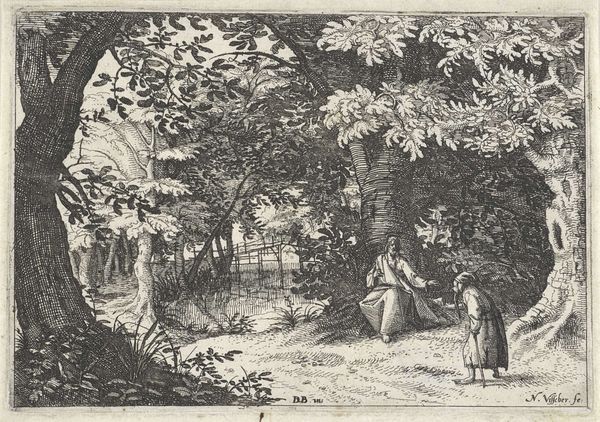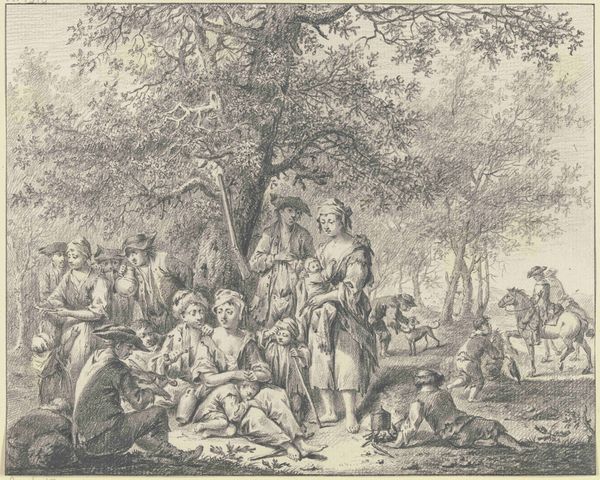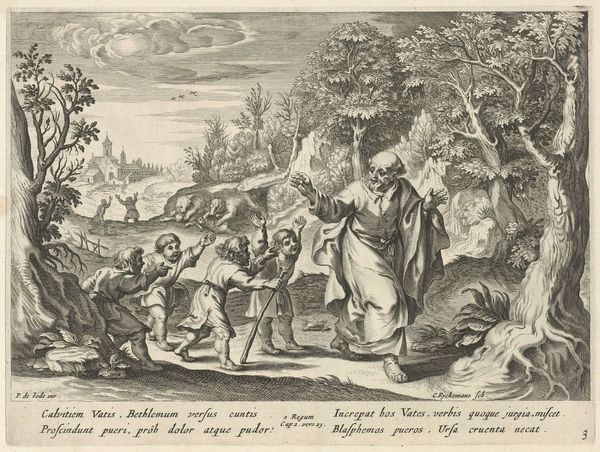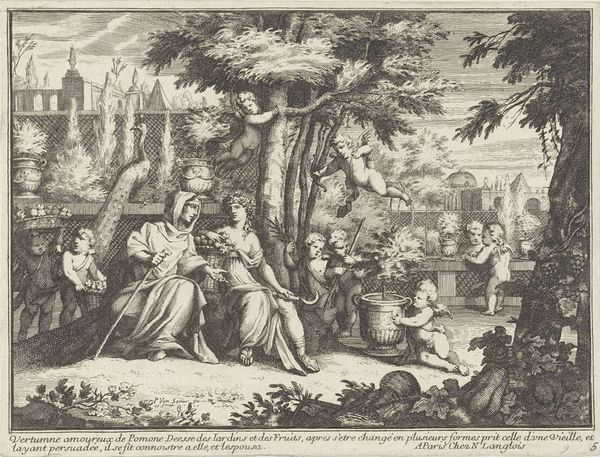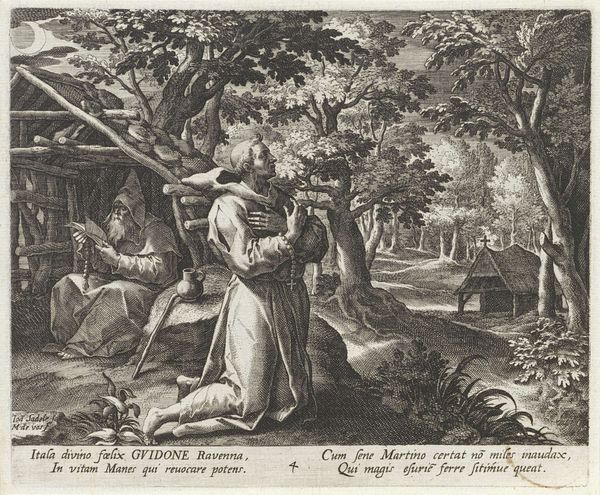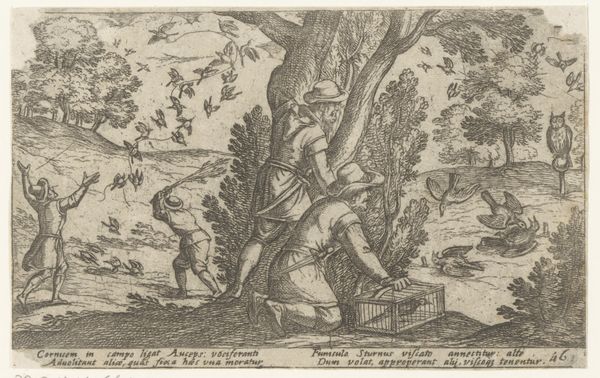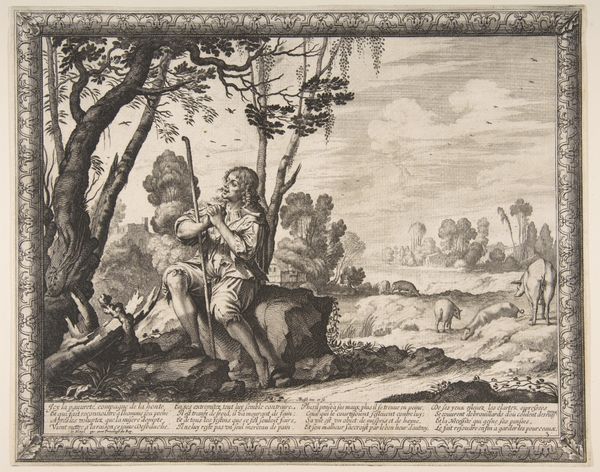
engraving
#
allegory
#
dutch-golden-age
#
dog
#
old engraving style
#
landscape
#
figuration
#
momento-mori
#
genre-painting
#
history-painting
#
engraving
Dimensions: height 103 mm, width 135 mm
Copyright: Rijks Museum: Open Domain
Editor: So, this engraving, “Paar door de dood verrast,” which translates to “Couple Surprised by Death,” made sometime between 1600 and 1650 by an anonymous artist. It's a really detailed piece, almost unsettling in how closely death is lurking behind this couple. What strikes you most about it? Curator: The labor involved in creating such fine detail with engraving tools. Think of the engraver: their skill, the workshop, their training, the cost of materials... Engravings like these weren't just art; they were products of a specific economic and social structure. What does the interplay between pleasure and the image of death say about that structure to you? Editor: Well, I guess it shows how ephemeral those earthly pleasures are when contrasted with the permanence of death, sort of highlighting a tension in the society's values, maybe? The engraving style itself, though, does give it a slightly more approachable feel, right? Curator: Exactly. The medium is the message here. The very act of reproducing and distributing this image transforms death into a commodity, something consumed by a wide audience. Look at the materiality of the scene -- the rendering of textiles, the detail of the drinking vessels -- it all speaks to the importance placed on material wealth, even in the face of mortality. Where were these prints being sold, who was buying them, and what anxieties are they trying to reckon with? Editor: That's fascinating. I hadn't really considered how the choice of engraving affects the meaning so directly. The level of production certainly does point towards broader consumption, beyond just a single wealthy patron. It suggests these anxieties were more widespread. Curator: Precisely! The relatively accessible medium facilitated wider participation with the imagery, making what might be a unique piece accessible across broader markets. The act of production itself creates the space for this moral and material tension to play out in society. Editor: That gives me a whole new way of thinking about engravings from this period. Curator: Indeed. Focusing on production and circulation brings these works to life, literally.
Comments
No comments
Be the first to comment and join the conversation on the ultimate creative platform.
